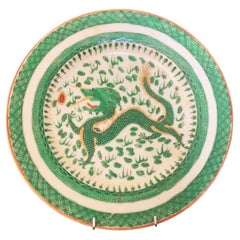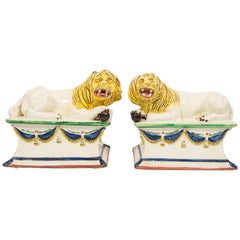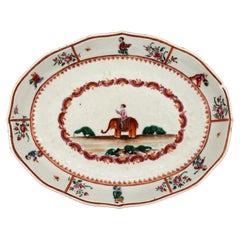Ceramics
18th Century Chinese Antique Ceramics
Ceramic
Late 18th Century French Neoclassical Antique Ceramics
Creamware
1730s Italian Rococo Antique Ceramics
Maiolica
18th Century Dutch Arts and Crafts Antique Ceramics
Ceramic
1770s Italian Rococo Antique Ceramics
Maiolica
Late 18th Century Chinese Qing Antique Ceramics
Ceramic
Late 18th Century English Neoclassical Antique Ceramics
Creamware
1760s Italian Rococo Antique Ceramics
Maiolica
16th Century Italian Renaissance Antique Ceramics
Maiolica
1770s Italian Rococo Antique Ceramics
Maiolica
Late 18th Century German Chinoiserie Antique Ceramics
Porcelain
1770s Italian Rococo Antique Ceramics
Maiolica
1770s Italian Rococo Antique Ceramics
Maiolica
1770s Italian Rococo Antique Ceramics
Maiolica
18th Century Chinese Chinese Export Antique Ceramics
Porcelain
18th Century Chinese Antique Ceramics
Porcelain
18th Century Chinese Chinese Export Antique Ceramics
Porcelain
Mid-18th Century Dutch Baroque Antique Ceramics
Ceramic, Faience
18th Century Japanese Japonisme Antique Ceramics
Ceramic
16th Century Italian Renaissance Antique Ceramics
Maiolica
1770s Italian Rococo Antique Ceramics
Maiolica
Late 18th Century English Antique Ceramics
Creamware
Late 18th Century French Louis XVI Antique Ceramics
Faience
1770s Italian Rococo Antique Ceramics
Maiolica
1780s English Antique Ceramics
Creamware
1770s Italian Neoclassical Antique Ceramics
Maiolica
1760s French Antique Ceramics
Porcelain
Late 18th Century Chinese Chinese Export Antique Ceramics
Porcelain
18th Century Japanese Edo Antique Ceramics
Porcelain
17th Century Japanese Edo Antique Ceramics
Porcelain
Early 1700s Italian Baroque Antique Ceramics
Maiolica
1770s Italian Rococo Antique Ceramics
Maiolica
Late 18th Century British George III Antique Ceramics
Creamware
1770s Italian Rococo Antique Ceramics
Maiolica
1770s Italian Rococo Antique Ceramics
Maiolica
1770s Italian Rococo Antique Ceramics
Maiolica
1770s Italian Rococo Antique Ceramics
Maiolica
1770s Italian Neoclassical Antique Ceramics
Maiolica
Late 18th Century French Directoire Antique Ceramics
Ceramic
1770s Italian Rococo Antique Ceramics
Maiolica
Early 1700s Chinese Qing Antique Ceramics
Enamel
1770s Italian Rococo Antique Ceramics
Maiolica
18th Century German Folk Art Antique Ceramics
Faience
Late 18th Century English Rococo Antique Ceramics
Creamware
Late 18th Century British Country Antique Ceramics
Pottery
1770s Italian Rococo Antique Ceramics
Maiolica
Late 18th Century French Classical Roman Antique Ceramics
Ceramic
Mid-18th Century Chinese Chinese Export Antique Ceramics
Porcelain
18th Century Chinese Qing Antique Ceramics
Porcelain
18th Century Spanish Neoclassical Antique Ceramics
Ceramic
Mid-18th Century Chinese Chinese Export Antique Ceramics
Porcelain
18th Century and Earlier Chinese Antique Ceramics
Late 18th Century British Neoclassical Antique Ceramics
Creamware
1770s Italian Rococo Antique Ceramics
Maiolica
Antique and Vintage Ceramics
Whether you’re adding an eye-catching mid-century modern glazed stoneware bowl to your dining table or grouping a collection of decorative plates by color for the shelving in your living room, decorating and entertaining with antique and vintage ceramics is a great way to introduce provocative pops of colors and textures to a space or family meals.
Ceramics, which includes pottery such as earthenware and stoneware, has had meaningful functional value in civilizations all over the world for thousands of years. When people began to populate permanent settlements during the Neolithic era, which saw the rapid growth of agriculture and farming, clay-based ceramics were fired in underground kilns and played a greater role as important containers for dry goods, water, art objects and more.
Today, if an Art Deco floor vase, adorned in bright polychrome glazed colors with flowers and geometric patterns, isn’t your speed, maybe minimalist ceramics can help you design a room that’s both timeless and of the moment. Mixing and matching can invite conversation and bring spirited contrasts to your outdoor dining area. The natural-world details enameled on an Art Nouveau vase might pair well with the sleek simplicity of a modern serving bowl, for example.
In your kitchen, your cabinets are likely filled with ceramic dinner plates. You’re probably serving daily meals on stoneware dishes or durable sets of porcelain or bone china, while decorative ceramic dishes may be on display in your dining room. Perhaps you’ve anchored a group of smaller pottery pieces on your mantelpiece with some taller vases and vessels, or a console table in your living room is home to an earthenware bowl with a decorative seasonal collection of leaves, greenery and acorns.
Regardless of your tastes, however, it’s possible that ceramics are already in use all over your home and outdoor space. If not, why? Whatever your needs may be, find a wide range of antique and vintage ceramics on 1stDibs.



